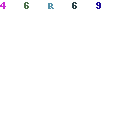Theater professor to add digital rendering to design curriculum
Theater professor Laura Hanson will teach digital costume design techniques she learned during her sabbatical.
According to Hanson, she has wanted to become more adept at digital rendering and to “really explore” the possibilities the last few years.

Theater professor Laura Hanson will apply knowledge gained during her sabbatical of digital rendering to the design curriculum. Photo by Theresa San Luis.
“It seems like a lot of costume designers and educators are turning toward computer rendering for their costume designs.” Hanson said.
According to theater and dance Department Chair Jim Wulfsong, Hanson’s research will help the department keep up with the industry.
“More and more of what’s been done in theatre is being done digitally,” Wulfsong said.
After attending a workshop on Painter and taking online courses on Photoshop programs, Hanson said she found the process of creating renderings quicker and easier than painting on paper.
“Up until now I’ve always used watercolors so you have to have a drawing table, paints and water, and it’s time-consuming and messy,” Hanson said. “With digital design programs, you can do it anywhere… even on an airplane.”
Two years ago Hanson attended an annual conference of the U.S. Institute for Theatre Technology. According to Hanson, the workshop in painting costume renderings on the computer “opened up all these possibilities.”
“Not only can you paint them but you can mount them, you can do backgrounds, you can use photorealistic backgrounds, artwork for the backgrounds, the set as your background,” Hanson said. “You can put your costume designs onto a context that’s meaningful for the idea of the play.”
“You can add lighting effects…[and] different patterns to fabrics. You can take your actual fabrics and scan them and scale them down to the size of your rendering and paint it onto your rendering with your actual fabric.”
Because Photoshop and Painter work in layers, Hanson said it is easy to correct mistakes.
“If you make a mistake in watercolor, it’s there and you have to go back with the water and try to dilute the paint get rid of it,” Hanson said. “With this one you can just correct it– get rid of the layer or [use] the undo button.”
These painting programs, according to Hanson, allow more creative opportunities for costume design because the tools can manipulate effects, smudges, shadows and highlights with clicks of an icon.
According to Hanson, being able to scan in the actual fabric is faster and can be helpful for students who sometimes find it difficult trying to copy a pattern of fabric on their renderings.
“I still think you need to know how to do these things by hand to understand the basic concepts, but then if your computer can help you do it faster and more accurately, why not?” Hanson said.
Another interesting program, according to Hanson, is pattern drafting where the computer applies a formula to accurately measure and produce flat patterns in costume creation.
“Pattern drafting has a lot of applications,” Hanson said. “It can be useful for dance concert costuming because multiples of the same pattern can be created by changing measurements through the program.”
Also, Hanson discovered she could draw quick ideas on the IPad using Autodesk Sketchbook and refer them to the director. She could then import ideas into programs or scan them into the computer in order to turn these sketches into full renderings.
In addition, she could e-mail her renderings to directors.
Hanson designed digital renderings of costumes for a production of “Oliver” this past summer by Insight Theater, a St. Louis professional company.
Hanson said she plans to introduce students to these digital rendering techniques in her Theatre 360 Advanced Costume Design class this fall.
“I just think our students should be computer savvy because that’s what’s out there,” Hanson said.
Filed Under: Theater & Dance












